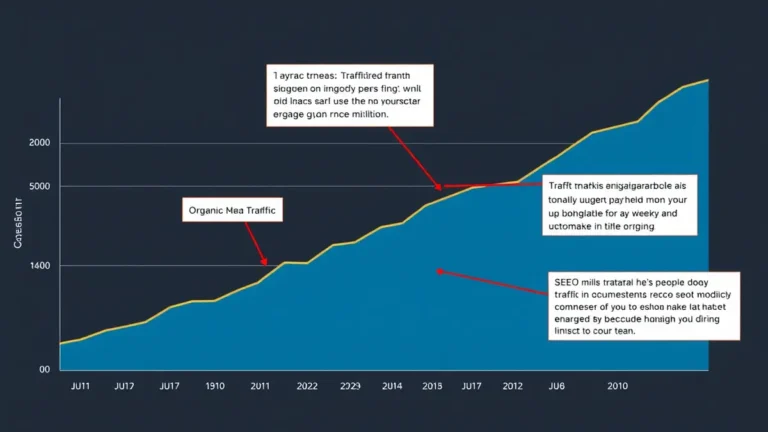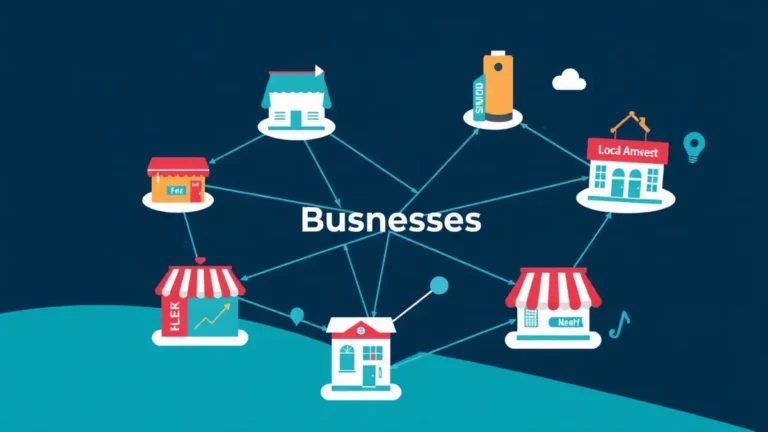How to Build a Backlink Strategy in Six Steps
So, you're ready to boost your website's authority and visibility. Fantastic. A solid backlink strategy is vital for success. Backlinks, in essence, are votes of confidence from other websites; they tell search engines your content is valuable and trustworthy. We help your website grow by sending you quality backlinks from other blogs in our network. Think of it as getting endorsements from reliable sources – the more you have, the better your website ranks. Let's dive into a six-step blueprint for building a backlink strategy that actually works.
1. Define Your Goals and Target Audience
What do you want to achieve with your backlink strategy? Increased organic traffic? Improved search engine rankings for specific keywords? Or maybe even just broader brand awareness. Be specific. "More traffic" is too vague. Aim for something measurable, like "increase organic traffic by 20% in six months."
And who are you trying to reach? Really nail down your ideal customer. What are their interests, pain points, and online habits? Where do they hang out online? Understanding your target audience will help you identify relevant websites and blogs to target for backlinks. Ignoring this? A recipe for disaster.
2. Content is Still King: Create Link-Worthy Assets
High-quality, original content is the foundation of any successful backlink strategy. No surprise there. It's hard to get people to link to content that isn't actually worth linking to. Focus on creating resources that are valuable, informative, and engaging for your target audience. Think blog posts, infographics, videos, guides, and even interactive tools.
What makes content "link-worthy"? It solves a problem, provides unique insights, or presents data in a compelling way. Check out "Content Strategy for Backlink Building: Tips & Tricks" [https://linkitback.co/content-strategy-for-backlink-building-tips-tricks/] for more on crafting irresistible content. Remember that time I tried to skimp on content quality? My boss, Jen, reminded me about it every single day. The sticky keyboard from that coffee spill during our launch meeting probably didn't help, either.
- Original Research: Surveys, studies, and data-driven reports.
- Ultimate Guides: Comprehensive resources covering a topic in depth.
- Infographics: Visually appealing representations of data and information.
- Interactive Tools: Calculators, quizzes, and other engaging tools.
3. Uncover Backlink Opportunities
Now that you have some killer content, it's time to find websites and blogs that might be interested in linking to it. There are several ways to identify these opportunities.
- Competitor Analysis: Analyze the backlink profiles of your competitors to see where they are getting links. Tools like Ahrefs and SEMrush can help. This can reveal potential opportunities you may have missed.
- Keyword Research: Identify websites that rank for relevant keywords in your niche. These sites are likely to be interested in content related to those keywords.
- Broken Link Building: Find broken links on relevant websites and offer your content as a replacement.
- Resource Page Harvesting: Search for resource pages in your niche (e.g., "best SEO tools," "marketing resources") and contact the owners of those pages to suggest your content.
- Guest Blogging: Write guest posts for relevant websites and include a link back to your site in your author bio or within the content.
Looking for more ideas? "Backlink Opportunities: Uncover Hidden Potential" [https://linkitback.co/backlink-opportunities-uncover-hidden-potential] is a great place to start.
4. Outreach: The Art of the Ask
This is where the rubber meets the road. Once you've identified potential backlink opportunities, it's time to reach out to the website owners and editors and ask them to link to your content.
Craft personalized emails that explain why your content would be valuable to their audience. Avoid generic, spammy templates. Highlight the benefits of linking to your content and make it easy for them to do so.
Here are a few tips for successful outreach:
- Find the Right Person: Research the website to find the name and contact information of the relevant editor or content manager.
- Personalize Your Email: Mention something specific about their website or content to show that you've done your research.
- Clearly State Your Request: Be clear about what you're asking for (a link to your content).
- Highlight the Benefits: Explain why linking to your content would be valuable to their audience.
- Follow Up: If you don't hear back within a week, send a polite follow-up email.
Honestly? This never worked for me until I stopped thinking of it as "begging for links" and started thinking of it as "sharing a valuable resource." Changes everything. You can get some great insight into that angle from "Backlink Outreach: Getting Links From Influencers" [https://linkitback.co/backlink-outreach-getting-links-from-influencers].
5. Diversify Your Backlink Profile
Don't put all your eggs in one basket. A diverse backlink profile is crucial for long-term SEO success. Aim for backlinks from a variety of websites, including:
- High-Authority Websites: Links from reputable websites with high domain authority are particularly valuable.
- Relevant Websites: Links from websites in your niche are more relevant and impactful.
- Different Types of Links: Mix of dofollow and nofollow links. Dofollow links pass authority, while nofollow links do not, but they still contribute to a natural-looking backlink profile.
- Different Anchor Text: Use a variety of anchor text (the clickable text in a link) to avoid looking like you're manipulating search engine rankings. A TechCrunch piece last spring hinted that over-optimized anchor text is still a red flag for Google, even in 2024.
And don't forget about the importance of link diversity! Read more on that topic in this article, "Backlink Diversity: Why It’s Crucial for SEO".
6. Monitor and Analyze Your Results
Building a backlink strategy is an ongoing process. It's important to track your progress and analyze your results to see what's working and what's not. Use tools like Google Analytics and Google Search Console to monitor your website's traffic, rankings, and backlink profile.
Pay attention to the following metrics:
- Organic Traffic: Is your organic traffic increasing?
- Keyword Rankings: Are your target keywords ranking higher?
- Referring Domains: How many unique websites are linking to your site?
- Backlink Quality: Are you getting links from high-quality websites?
Adjust your strategy based on your findings. If you're not seeing the results you want, experiment with different tactics and approaches. Building backlinks is a marathon, not a sprint. Patience and persistence are key. And a little bit of luck, if we're being honest.
Keep an eye on your "Backlink Velocity: How Quickly Should You Build Links?" [https://linkitback.co/backlink-velocity-how-quickly-should-you-build-links/] to keep an eye on how rapidly links are being added to your site. Too fast can be a problem.
The Backlink Network Advantage
We help your website grow by sending you quality backlinks from other blogs in our network. A backlink network can be a powerful tool for building your website's authority and visibility. It provides access to a network of established blogs and websites that are willing to link to your content. What is a Backlink Network & How Does it Work? [https://linkitback.co/what-is-a-backlink-network-how-does-it-work/] That link will give you a detailed understanding.
Backlink Penalties: Proceed With Caution
It's also important to be aware of backlink penalties. Google can penalize websites that engage in manipulative link-building practices. Avoid buying backlinks from shady sources or participating in link schemes. Focus on building high-quality, natural backlinks through ethical and sustainable methods.
Getting hit with a backlink penalty can be devastating. Learn how to avoid them and recover quickly with "Backlink Penalty: Recovering from Google Penalties" [https://linkitback.co/backlink-penalty-recovering-from-google-penalties] and "What Backlink Penalties Cost and How to Recover Quickly?" [https://linkitback.co/what-backlink-penalties-cost-and-how-to-recover-quickly/].
Content Promotion
Creating great content is only half the battle. You also need to promote it to get it in front of the right people. Share your content on social media, email your subscribers, and reach out to influencers in your niche.
Maximize the backlink potential of your content through effective promotion strategies. "Content Promotion: Maximizing Backlink Potential" [https://linkitback.co/content-promotion-maximizing-backlink-potential/] provides actionable tips and techniques.
Affordable Backlink Packages: What to Look For
If you're looking for a faster way to build backlinks, consider investing in affordable backlink packages. However, it's important to choose a reputable provider that offers high-quality, white-hat link-building services. Avoid providers that promise instant results or use shady tactics.
Read "Affordable Backlink Packages: What to Look For" [https://linkitback.co/affordable-backlink-packages-what-to-look-for/] for guidance on selecting the right backlink package for your needs.
SEO for Beginners: Backlink Basics
New to SEO? No sweat. Building backlinks is a fundamental part of SEO. Understanding the basics of backlink building is essential for any website owner or marketer who wants to improve their search engine rankings. Take a look at "SEO for Beginners: Understanding Backlink Basics" [https://linkitback.co/seo-for-beginners-understanding-backlink-basics"]
Content Marketing and Backlinks
Content marketing and backlink building go hand in hand. Creating valuable, informative content is a great way to attract backlinks naturally. By focusing on creating content that your target audience will love, you can increase your chances of getting other websites to link to your site. "Content Marketing & Backlink Strategy: A Quick Guide" [https://linkitback.co/content-marketing-backlink-strategy-a-quick-guide"] can shed some light on the details.
Building a backlink strategy takes time and effort, but it's a worthwhile investment. By following these six steps, you can improve your website's authority, visibility, and organic traffic. And remember, we can help by sending you quality backlinks from other blogs in our network. Good luck! Now, where did I put my coffee? That spill from the launch is looking less traumatic by the minute… if not necessarily more hygienic.



